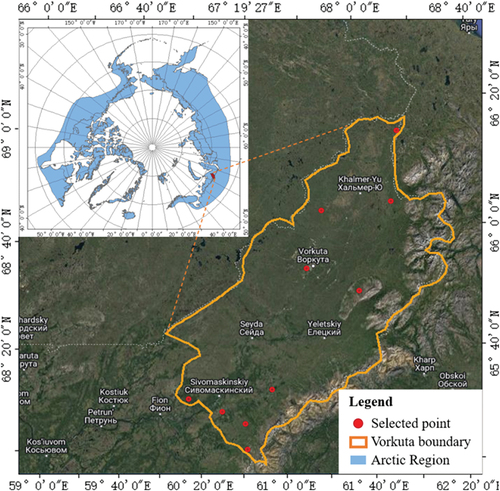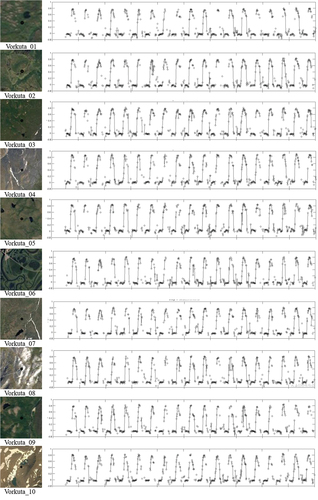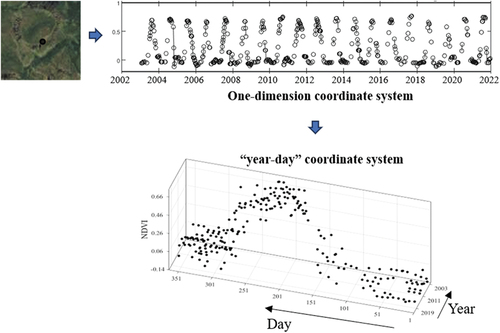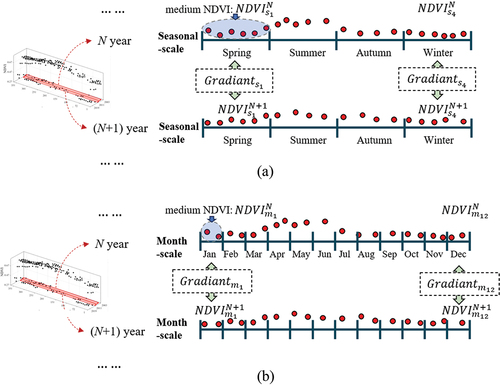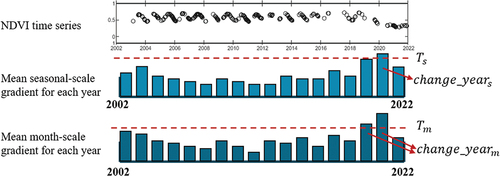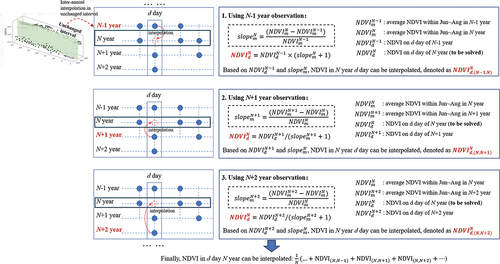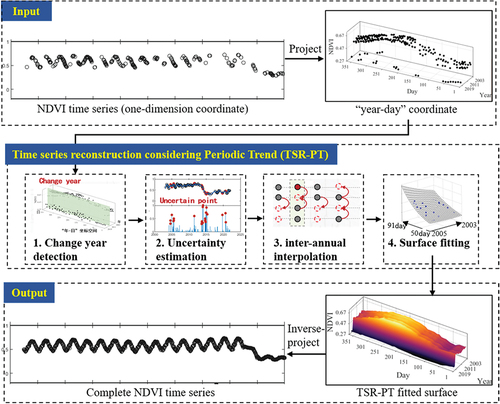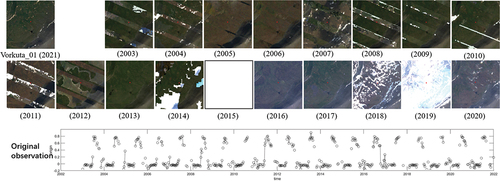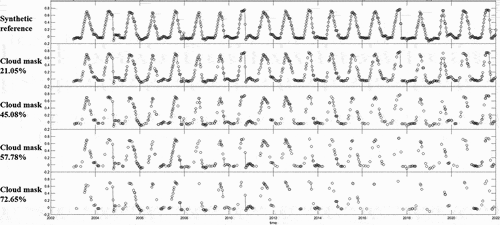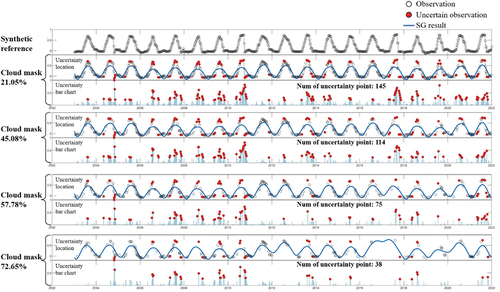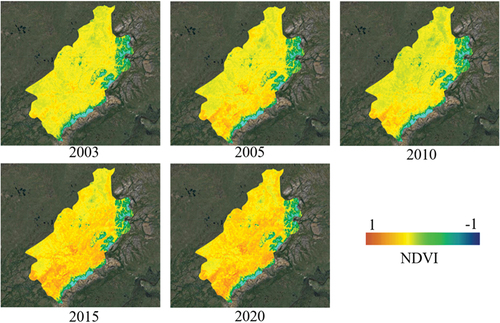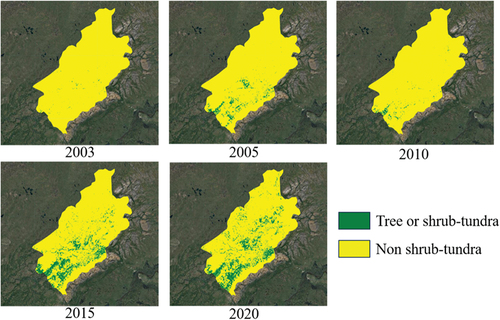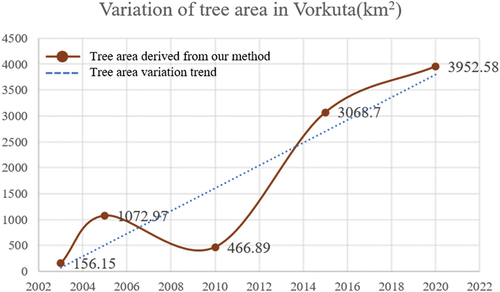Figures & data
Figure 12. Comparison of the NDVI time series reconstruction result of each algorithm on 72.65% cloud mask situation, as well as the RMSE of each predicted observation.
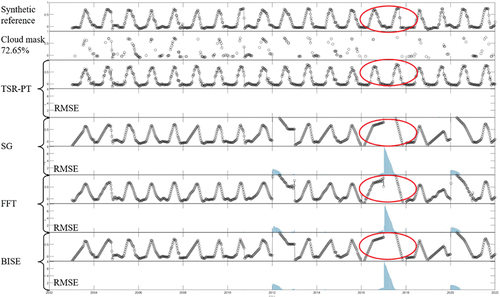
Figure 13. Comparison of the NDVI time series reconstruction result in single year on 72.65% cloud mask situation, to examine the detail performance.
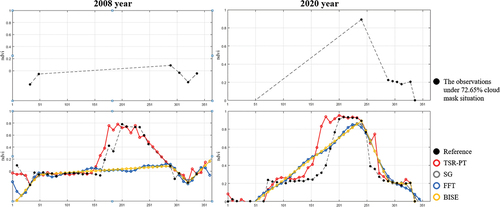
Table 1. Additional controllable variables that further help for change year determination.
Table 2. Quantitative assessment of each algorithm on Vorkuta_01 under four different cloud mask situations.
Table 3. Quantitative assessment of each algorithm on Vorkuta_02 ~ 10 under ~70% cloud mask situation.
Data availability statement
The data that support the findings of this study are available from the corresponding author, [Da, He], upon reasonable request.

